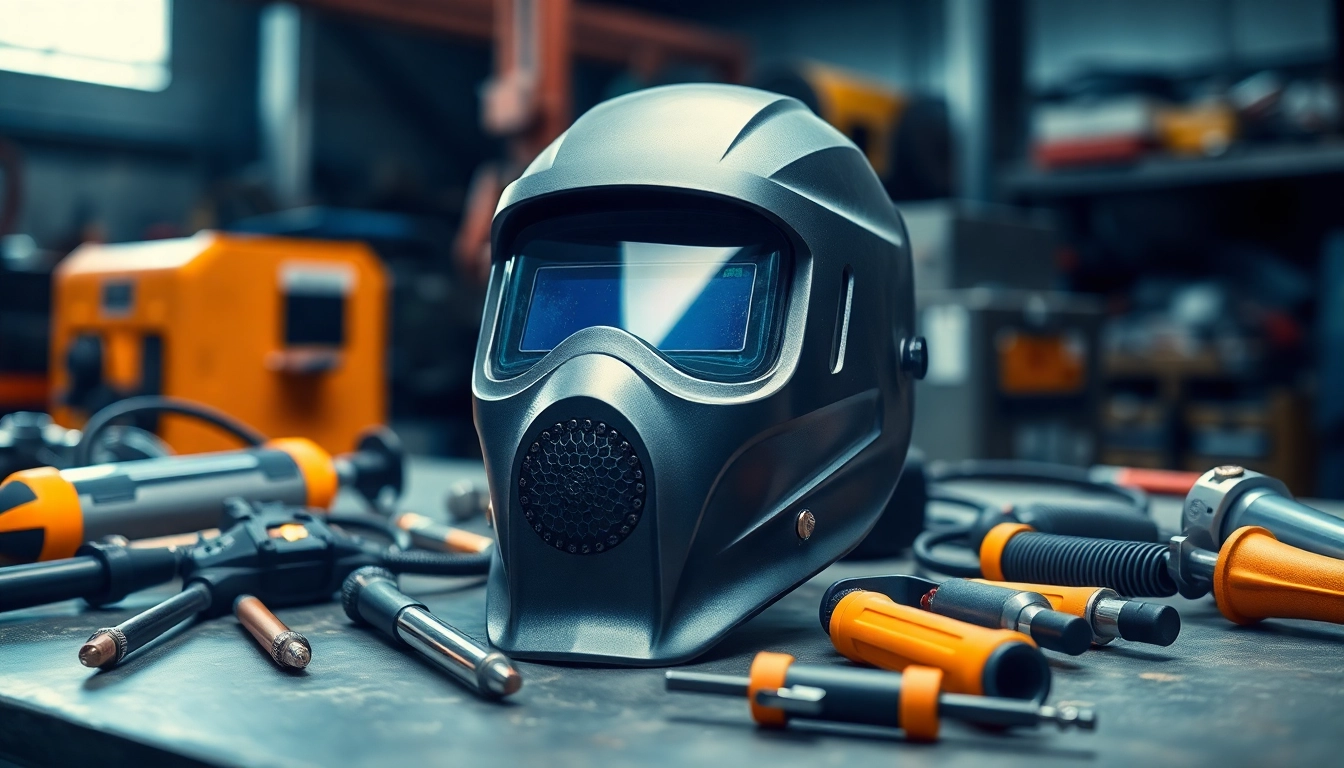Understanding Precision Die Cutting
What is Precision Die Cutting?
Precision die cutting is a manufacturing process used to cut materials into specific shapes and sizes with remarkable accuracy. This technique employs specialized dies—made of steel or other materials—to slice through various substrates, including paper, plastics, textiles, and metals. The term “precision” signifies not only the exactness of the cuts but also the intricate details that can be achieved. As industries evolve, the demand for custom, high-quality components grows, making precision die cutting a critical technique for manufacturers across diverse sectors.
This process is pivotal in producing fasteners, gaskets, labels, and a myriad of other items that require consistency and uniformity. By leveraging the process of precision die cutting, companies can ensure rapid production without sacrificing quality or performance.
Key Processes and Techniques in Die Cutting
Precision die cutting encompasses several key processes and techniques, each tailored to meet specific manufacturing needs:
- Flatbed Die Cutting: This traditional method utilizes a flat surface where a die is pressed down onto the material. It’s suitable for thicker materials and is often used for packaging and labels.
- Rotary Die Cutting: Involves a circular die that rotates as it cuts through materials. This technique is ideal for high-volume production, providing seamless speeds without compromising precision.
- Digital Die Cutting: An innovative approach that leverages computer-controlled cutting machines. This technique allows for quick adjustments and is increasingly popular for customized designs and smaller production runs.
Each technique has its pros and cons, which can significantly impact the final product’s quality and production costs. Choosing the right process depends on factors such as material type, volume, and required tolerances.
Industries Benefiting from Precision Die Cutting
The versatility and adaptability of precision die cutting translate into benefits across various industries. Here are some key sectors that rely heavily on this manufacturing process:
- Automotive: Precision die cutting is used for manufacturing components like gaskets, seals, and insulation, ensuring vehicles function efficiently and safely.
- Medical: In the medical field, precise die-cut components are crucial for applications in instruments, devices, and packaging that require strict adherence to regulations and safety standards.
- Consumer Products: Die cutting is frequently used to create packaging solutions that protect products while also delivering branding and marketing value.
- Electronics: The electronics industry employs precision die cutting to fabricate essential parts like insulation and cushioning for sensitive components, enhancing durability and performance.
By meeting the unique requirements of these industries, precision die cutting plays a vital role in the modern manufacturing landscape, contributing to efficient operations and quality outcomes.
Benefits of Precision Die Cutting
Cost Efficiency in Production
One of the most significant advantages of precision die cutting is its cost efficiency. Once the die is created, the cost per unit significantly decreases, especially in large production runs. This is particularly beneficial for industries requiring bulk quantities. The initial setup costs can be justified by the savings earned from streamlined production.
Additionally, precision die cutting minimizes waste material, optimizing the use of raw materials. This reduction not only lowers overall costs but also contributes to sustainability—a considerable factor in today’s environmentally conscious market.
High Quality and Tolerance Levels
Precision die cutting is synonymous with high quality. The technology involved allows for superior accuracy, often achieving tolerances within ±0.005 inches, depending on the materials and methods used. This level of precision is crucial for applications where slight variations can lead to product failure or safety issues.
The finished products exhibit clean edges, consistent dimensions, and can be produced to meet specific customer requirements. This enhanced quality can elevate a brand’s standing in its industry and foster long-term partnerships with clients.
Speed of Production and Turnaround Times
In the fast-paced world of manufacturing, speed is a critical factor. Precision die cutting processes enable quick setups and short run times, making it possible to bring products to market faster than traditional methods. Innovations in technology, including automated die-cutting machines, further reduce production times while maintaining quality.
Shorter turnaround times allow businesses to respond swiftly to changing market demands and customer needs. This agility can be a significant competitive advantage, especially in industries characterized by rapid shifts and trends.
Choosing the Right Die Cutting Partner
Factors to Consider When Selecting a Vendor
Finding the right die cutting partner is essential for ensuring the success of any project. Here are some critical factors to consider:
- Experience and Expertise: Look for a vendor with a proven track record in precision die cutting. Their expertise in handling various materials and custom projects can directly impact the quality of your products.
- Capabilities: Assess the vendor’s technology and capabilities. Ensure they have the necessary equipment and processes to produce the specific components you need, whether it be rotary, flatbed, or digital cutting methods.
- Quality Assurance: Evaluate the vendor’s quality control measures. High-quality standards will ensure that the output meets your specifications consistently.
Certification and Quality Standards
It’s crucial to partner with vendors who adhere to certified quality standards, such as ISO certifications. These certifications indicate a dedication to maintaining product quality and operational excellence. Choosing a certified vendor helps build trust and assurance in the production processes and final products.
Leveraging Customer Feedback and Reviews
Customer feedback can provide invaluable insights into a vendor’s reliability and service quality. Look for reviews and testimonials from previous clients. This information will help you gauge their performance across various projects and their ability to meet deadlines and specifications.
Engage with potential vendors directly to ask about their previous projects and how they handle challenges. A responsive and communicative vendor can be a significant asset throughout your production process.
Common Challenges in Precision Die Cutting
Dealing with Material Limitations
Every material has its unique properties and limitations, which can pose challenges in the die cutting process. Thickness, pliability, and density can affect the ease and precision of cuts. For instance, harder materials may require more robust dies and pressures, which can complicate the cutting process.
To mitigate risks, it’s essential to conduct material trials before full production. Understanding how materials react during the die cutting process will enable better planning and adjustments, ensuring optimal results.
Addressing Tolerance and Accuracy Issues
Even minor deviations in die cutting can lead to significant discrepancies in product functionality or appearance. It is vital to establish strict tolerances from the outset and ensure that both the cutting process and final parts adhere to them.
Regular calibration of cutting equipment and routine quality checks can mitigate potential issues. Establish clear communication with the vendor regarding tolerance requirements to maintain standards throughout production.
Overcoming Production Delays
Production delays can significantly impact business operations, leading to lost revenue and customer dissatisfaction. Delays may arise from equipment malfunctions, material shortages, or inefficient processes. To prevent this, clear contingency plans should be established.
Engaging with vendors who provide reliable timelines, backup systems, and responsive customer service can greatly minimize the risks of delays. Planning and maintaining open lines of communication throughout the production process also contribute to a smoother experience.
Future Trends in Die Cutting Technology
Advancements in Automation and Robotics
The future of precision die cutting is significantly impacted by advancements in automation and robotics. Modern machines equipped with automated cutting processes improve not only speed and accuracy but also reduce the potential for human errors. This trend toward increased automation translates into lower operational costs and enhanced productivity.
Moreover, robotic systems can now manage repetitive tasks, allowing skilled workers to concentrate on more complex projects and problem-solving scenarios, thus increasing overall efficiency in manufacturing environments.
Integration of Sustainable Practices
As global awareness of environmental issues rises, manufacturers are increasingly prioritizing sustainability in their operations. Precision die cutting can play a crucial role here by reducing waste and optimizing material usage. Options like eco-friendly materials and energy-efficient die cutting technologies are becoming more prevalent.
Implementing sustainable practices not only enhances corporate responsibility but can also resonate with environmentally conscious consumers and business partners, fostering stronger relationships in today’s market.
Implementing Smart Manufacturing Solutions
The integration of smart technologies within the die cutting process—such as the Internet of Things (IoT) and data analytics—holds immense potential for the future. These technologies can monitor machine performance, predict maintenance needs, and analyze production efficiency.
This data-driven approach enables manufacturers to make informed decisions, streamline processes, and increase product quality. As industries embrace Smart Manufacturing solutions, precision die cutting will continue to evolve, fostering innovation and collaboration across various sectors.


